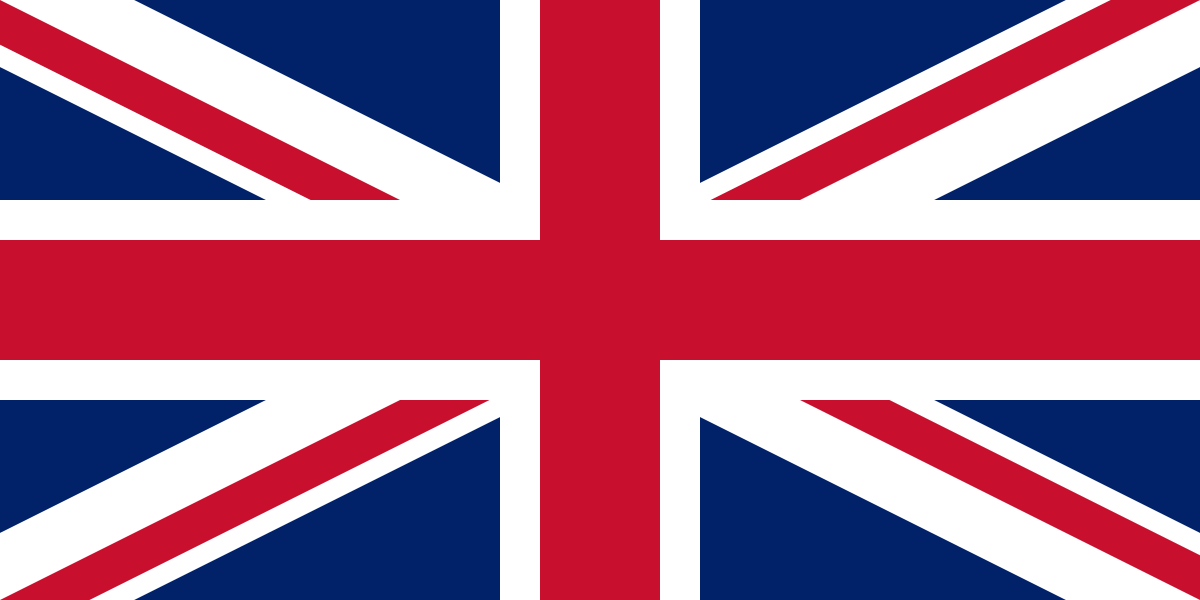
Canadian
Canada consistently ranks among the best place to live in numerous studies. In both 2018 and 2019, Canada was ranked third best country in the world by US News & World Report. This is due in large part to its access to education, high life expectancy (Canada boasts a universal health care system), and low crime and violence rates. It’s no wonder that more and more international students are choosing to study in Canada.
Population
Canada has a population of about 36.7 million. The majority of Canadians are of European descent from early French and British colonists, as well as later immigrants from eastern and southern Europe. The second half of the 20th century saw a large increase in the number of immigrants from Asia, the Caribbean, and Africa. There are currently more than 260 different ethnic origins reported across Canada. It is also home to a large aboriginal population made up of the First Nations, Inuit, and Métis.
Canadian Values
Canada is an immensely large country that is extremely varied in its people, landscape, and climate. Because of this, the Canadian way of life will vary from one individual to the next. Canadians practice many different religions, and over 20 percent claim no religious affiliation. Canadians do share important values such as pride, a belief in equality and diversity, and respect for all individuals. It is these values that make Canada known as a friendly, peace-loving, and secure place in which to live.
Geography
Canada is located in the northern half of the North American continent, and is the second-largest country in the world. Despite its impressive size, the majority of the population lives within a few hundred kilometers of the southern border.
Canada has over two million lakes, and vast mountain ranges that include the Torngats, Appalachians, and the Rocky Mountains. The most important river in Canada is the St. Lawrence River, which is 3,058 km long and provides a seaway for ships from the Great Lakes to the Atlantic Ocean.
Climate
Canada’s climate is as varied as its people. Although much of the north has a particularly harsh arctic climate, that area is mostly uninhabited. The most populous regions of Canada, which lie in the southern regions along the US border, see four distinct seasons a year. Although winter lasts longer than summer in most of the country, the summers are quite hot. Rainfall varies from light to moderate, and there are heavy snowfalls in some areas.
Winters are less severe in the south because of the moderating influence of the Great Lakes. Southern summers are longer, but more humid, with temperatures averaging at about 20ºC from mid-June to mid-September. In the winter, lows of -25ºC are not uncommon. Expectedly, temperatures in spring and fall tend to be more moderate.
Canadian Provinces
Canada is made up of ten provinces and three territories. From west to east, the provinces are: British Columbia, Alberta, Saskatchewan, Manitoba, Ontario, Quebec, New Brunswick, Prince Edward Island, Nova Scotia, Newfoundland, and Labrador. The territories are the Yukon, the Northwest Territories, and Nunavut.
Despite the impressive size of the country, the majority of Canada’s population lives in a concentrated area of cities and towns within 100 kilometers of the US border. The population density in Canada is one of the lowest in the world, at 3.9 persons per square kilometer.
As of 2018, the largest cities by population Canada are:
Toronto Montreal Vancouver Calgary Language
Canada has two official languages: English and French. English is the mother tongue of about 59% of Canadians, and French the first language of about 23%. Eighteen percent of Canadians either have more than one mother tongue or a mother tongue that is not English or French.
The Official Language Act makes English and French the official languages of Canada and provides for special measures aimed at enhancing the vitality and supporting the development of English and French linguistic minority communities. Canada’s federal institutions reflect the equality of its two official languages by offering bilingual services.
Other languages spoken in Canada include Chinese, Panjabi, Spanish, Arabic, and Tagalog. The most common Aboriginal languages are Cree, Inuktitut, and Innu/Montagnais.
Canadian Colleges and Universities to Consider
Once you’ve decided to study in Canada, the next step is choosing where to apply. There are many great schools in Canada, and narrowing down your options can be daunting. There are a number of factors to take into consideration. While no rules exist for choosing a college or university in Canada, these tips can help make the process easier.
Study Interests
Knowing what subject you want to study is a useful first step. If you are planning on studying in a specialized field, you may find that the list of colleges and universities that offer your program is already quite short. That would make the decision process easier.
Even if the subject you want to study is more common, you’ll want to make sure that the schools you are considering offer it. View online course catalogues from the schools you are interested in and browse their websites.
When choosing a college or university in Canada, other factors to consider include:
• Primary language of the school — The most common languages spoken in Canada are English and French. Some schools use one or both as their main language. Be sure that you’ll be able to study and communicate in the necessary one.
• Type of school — Are you interested in and at the right point in your education to study at a college, university, vocational school or institute?
• Type of degree — Are you planning on pursuing an associate’s, bachelor’s, master’s, or Ph.D.?
• Location — Make sure you research the area each of the schools on your list is located in. Are you looking for an urban, suburban, or rural location?
• Size of school — Are you interested in a large campus or small? Big lectures or small seminars? Both have their own pros and cons, so it’s important to decide which you are most comfortable with.
• School reputation — Make sure you spend time researching this and find out the job placement rate of graduates of each school you’re considering.
• Quality of facilities and resources — How are the libraries, labs, and technical equipment?
• Opportunities for work experience — Is there a cooperative (“co-op”) program, or something similar?
• Fees and financial aid — Studying abroad can be expensive. Does the school offer grants or scholarships to help you afford your studies?
• Faculty and staff — Research the faculty in your program. Is there anyone you particularly want to study with?
• Accommodations for special needs — Is the school able to accommodate students with physical or learning disabilities?
• Recreational activities — Does the school offer extracurricular activities that might interest you, such as sports, clubs, or a school newspaper?
Some of these factors may be more important to you than others. Feel free to customize this list to reflect what is most important to you in a school.

Other Factors
If you want to study in Canada but need to improve your English language skills, consider a pathway program.
Applying to Schools in Canada
Once you’ve narrowed down your list, the next step is to start putting together your applications. All schools in Canada will have different application requirements, so it is important to find each school’s requirements to apply, as well as language requirements for English or French.
Schools to Consider
Canada does not have an official university ranking system. You may find ranking published in magazines or newspapers, but these are not official, and many universities do not participate in these rankings. This makes it difficult to determine if these rankings are accurate.
Here are a few Canadian colleges and universities to consider:
• Queen's University School of English — Kingston, Ontario
• University of Toronto — Toronto, Ontario
• University of British Columbia — Vancouver, British Columbia
• McGill University — Montréal, Québec
• Seneca College — Toronto, Ontario
• University of Alberta — Edmonton, Alberta
• University of Montréal — Montréal, Québec
• Algonquin College — Ottawa, Ontario
• University of Calgary — Calgary, Alberta
• Carleton University — Ottawa, Ontario
• Concordia University — Montréal, Québec
Social Life
Canada is a massive country, so having a social life and things to do is always in your favor. Depending on which part of the country you’re in, you could be merely a short drive or a short plane ride from once-in-a-lifetime activities such as:
• Visiting Niagara Falls
• Exploring Banff National Park
• Skiing in Whistler
• Sight-seeing on Prince Edward Island
• There’s plenty more to see, but you’ll never run out of places to occupy your time when
Safety in Canada
Canada is widely regarded as one of the safest places in the world to live. It is still important to follow the same common sense safety precautions in Canada that you would anywhere else in the world. Your safety is your number one priority.
In an Emergency
If you are in trouble or witness to a crime, do not hesitate to call 911. This is a central number for police, fire, and ambulance throughout Canada. Interpreters are available if your first language is not English. If you are robbed, do not try to argue or fight, and if you are assaulted, shout or blow a whistle to attract attention to your situation. Try to protect your body and distract the attacker so that you can escape. If the attacker asks for your purse or wallet, instead of handing it to them, throw it and run in the opposite direction.
If you are a victim of a crime, no matter how small, report it to the police.
Transportation Safety
Before leaving for your destination, make sure you are familiar with your bus route and schedule. Alternatively, taxis are a good way to get home when it is late and dark. Keep the number for a taxi company on hand, just in case. Canadian taxis should all have running meters showing the cost of the ride. Drivers will not try to negotiate a price with you.
Along with the classic taxi, rideshare in Canada is nearly as prevalent as it is in the US. Uber might be the most popular option worldwide, but some savvy startups have given Canada riders more options including but not limited to:
Kangaride
Poparide
Lyft
Carma Carpooling
Availability of each of these services will vary upon the location you’re in. Research which options exist in the province you’re in. Rideshare is generally the most economic option of traveling by vehicle, and certainly is the safe alternative to driving under the influence. Be sure to partake responsibly!
Many public transportation systems also offer special assistance for those traveling alone at night. When taking the bus, make sure you know your route and bus schedule beforehand, and choose busy, well-lit bus stops after dark. Whenever possible, choose a seat up front, close to the bus driver so they can step in if someone is harassing you. Don’t be afraid to switch seats if someone is making you uncomfortable. Your comfort and safety is more important than avoiding being seen as rude. During late hours, try asking your bus driver to stop at the street closest to your destination, so you can cut down on walking alone after dark as much as possible.
Walking Safety
When walking alone, be aware of who and what is going on around you. Avoid walking with headphones in or anything else that might distract you from your surroundings. Some areas might be safer than others. Ask advice for the best routes to take when going out. Always walk on well-lit, busy streets at night, and travel with a friend whenever possible. Avoid isolated areas, such as parks or alleys. If you have to walk alone, walk with confidence, and make sure you plan your route to and from your destination.
Many college campuses offer services such as "safety escorts" and transportation to assist students traveling around campus after dark. It’s a good idea to have the numbers for these services programmed into your phone.
Always tell someone where you are going and when you will return. If you feel that you are being followed, change directions and go to the nearest store, restaurant, or public place. Avoid carrying large amounts of money or weapons. Weapons are illegal in Canada and can be used against you.
Drinking and Parties
Make sure you know the legal drinking age in your province. An ID or passport will be needed in order to purchase alcohol or to enter a bar or club. If you go to a bar, make sure you go with friends to ensure there are people you trust who can help you if you run into any problems. Before you go out, make sure you have a plan to get home that does not involve drinking and driving. This might mean having a friend as a designated driver, taking a taxi, using rideshare, or taking the bus. With the exception of rideshare apps, don’t accept rides from strangers. And when using rideshare apps, always check that the license plate, name and photo of the driver, and vehicle description match the one you are provided in the app.Drugs are illegal in Canada and are dangerous. Do not use or possess any. International students caught possessing drugs can be deported. It is also illegal to drink alcohol in public places such as parks, beaches, cars, or on the street. Be wary of what could jeopardize your ability to study in Canada.
Apartment Safety
Don't let people you don’t know into your apartment building or dorm room. If you aren't expecting maintenance or a delivery, refer them to the building manager. This also means not holding the door open for people you don't know. This might feel rude, but your safety while in Canada and the safety of your neighbors or roommates is more important. Don't prop doors open with the floor mat or other blocks, as this can allow strangers to enter the building unannounced. Always lock your doors and windows, even when you’re at home, and look through the peephole before you open your door for someone. It’s also a good idea to get to know your neighbors, so you will have people around who can help you in an emergency.
The education system in Canada encompasses both publicly-funded and private schools, including: community colleges/ technical institutes, career colleges, language schools, secondary schools, summer camps, universities and university colleges.
Education is a provincial responsibility under the Canadian constitution, which means there are significant differences between the education systems of the different provinces. However, education is important to Canadians, and standards across the country are uniformly high.
canada has become a booming hub for international students whose dreams include remaining in the country in which they complete their studies. No longer an overlooked global destination to earn a degree, Canada also offers a direct path to permanent citizenship - an option many international students seek. Canada has ranked as one of the top ten places to live in the world for over twenty years, and boasts an education system ranked among the best.
Canada is an increasingly popular option for students who seek and require a less expensive alternative to studying internationally than they might find in the US. Canadian universities are now providing equally prestigious degrees as those in the US, often at a more affordable cost.
Canadians place a great amount of importance on learning, and standards in education in Canada are uniformly high. There are almost 100 universities in Canada, five of which—the University of Toronto, McGill University, University of British Columbia, Université de Montréal, and University of Alberta—are ranked among the top 100 in the world.
The Canadian Way of Life
Because Canada is such an immense country, it is extremely varied in its people, landscape, climate, and way of life. However, Canadians do share important values such as pride, a belief in equality and diversity, and respect for all individuals. International students who are considering studying in Canada will want to familiarize themselves with the culture and customs they can expect to experience.
Safety in Canada
Canada is widely regarded as one of the safest places in the world to live. However, it is still important to follow the same common sense safety precautions in Canada that you would anywhere else in the world. Read on to learn some general tips to keep you safe and well during your studies in Canada.
Student Accommodations
Students in Canada have a number of options when it comes to accommodation. Whether you’re staying on campus or living in a private residence, you will be able to find the right housing for you.
Canadian Colleges and Universities to Consider
After deciding to study in Canada as an international student the next step is to choose an institution. There are a variety of great educational institutions throughout Canada, so narrowing down your list of choices can be a tough task.






